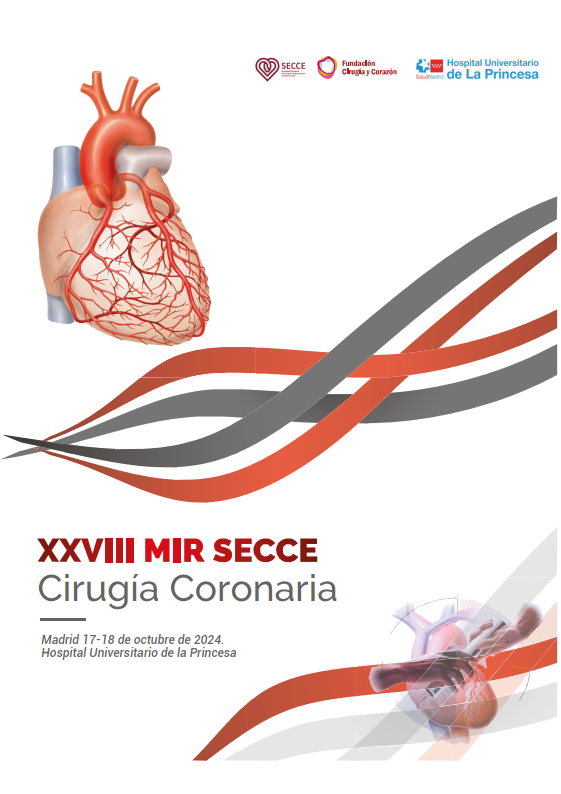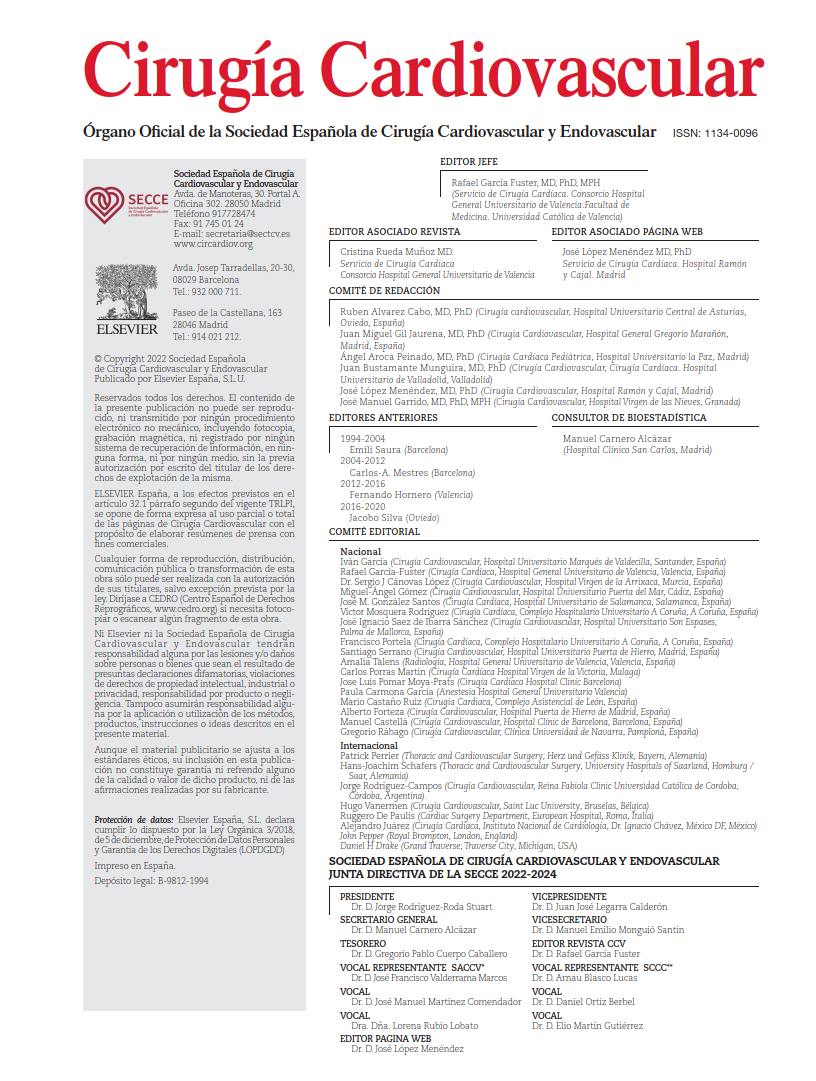The prevalence of coronary artery disease (CAD) in patients undergoing TAVI for severe AS is high, and its therapeutic management remains a matter of debate. Coronary angiography continues to be the standard method to assess the presence and severity of CAD in this context. However, it has limited accuracy in determining the functional significance of coronary stenoses.
Conventional physiological assessment tools such as fractional flow reserve (FFR) and instantaneous wave-free ratio (iFR) are not validated in the setting of severe AS due to a series of hemodynamic alterations discussed in detail in the literature, which impair the reliability of diagnostic thresholds established for patients without valvular disease. The objective of this review is to summarize current evidence on the functional assessment of CAD in patients with severe AS and its therapeutic implications, emphasizing its potential impact on clinical practice.
Two major clinical trials were included and are summarized below:
- NOTION-3 trial: A total of 455 patients (mean age 82 years) with severe AS and significant CAD, defined by FFR ≤ .80 or angiographic stenosis > 90%, were randomized to PCI or conservative treatment. At a median follow-up of two years, the primary endpoint of death and major adverse cardiovascular events (MACE) occurred in 26% of the PCI group and 36% of the conservatively managed group (p = .04), despite a higher incidence of bleeding events in the PCI group. Patients with recent myocardial infarction or left main disease were excluded, and symptoms were not used as inclusion or exclusion criteria.
- ACTIVATION trial: This trial randomized 235 patients awaiting TAVI with significant CAD (angiographic stenosis > 70%) and stable angina (CCS class ≤ 2) to PCI versus optimal medical therapy. No statistically significant differences were observed for either primary or secondary endpoints. The authors highlight a potential overestimation of lesion severity when attributing anginal symptoms to coronary disease, which may actually stem from the underlying valvular pathology. Moreover, PCI has not shown survival benefit in patients with stable angina or asymptomatic CAD.
The review explores multiple coronary physiology indices (FFR, iFR, CFR, etc.) and underscores the limitations introduced by the hemodynamic alterations associated with valvular disease. For instance, the assessment of FFR may underestimate the functional significance of coronary lesions when standard thresholds (≤ .80) are applied. This was confirmed in a meta-analysis by Minten et al., in which FFR values decreased by approximately 0.02 ± 0.07 (p = .004) when the same lesions were reassessed after TAVI. Nonetheless, FFR remains a broadly accepted reference tool to guide clinical decision-making.
COMMENTARY:
TAVI has revolutionized the treatment of aortic stenosis. However, the evaluation of coronary physiology in this setting is still evolving. This review compiles the available evidence regarding coronary physiology testing in the assessment of CAD in patients with severe AS awaiting TAVI.
Functional assessment of CAD in patients without valvular disease has strong supporting evidence and is recommended in ESC/EACTS guidelines as a Class IA indication. In contrast, the benefit of PCI before or during TAVI remains less definitive. ESC/EACTS guidelines recommend performing coronary angiography in patients over 40 years of age undergoing valvular intervention (Class IC). Nevertheless, there is a growing tendency to limit diagnostic testing in patients over 80 years of age without clinical angina. As a result, the number of PCI procedures has dropped by approximately 50% over the past decade.
All patients undergoing TAVI require preprocedural CT imaging for procedural planning. Although CT is not specifically designed to detect CAD, the evaluation of proximal coronary segments is recommended to potentially avoid unnecessary invasive procedures. CT-derived FFR could offer an ideal means of combining anatomical and functional assessment. However, while the technique appears safe, its moderate diagnostic performance limits its widespread clinical application.
Several small observational studies have evaluated various methods for assessing coronary physiology and consistently highlight the complex hemodynamic landscape of severe AS. These findings reinforce the need for robust randomized trials to validate specific thresholds that would allow broader clinical implementation of these techniques. Of note, FFR may underestimate the hemodynamic significance of lesions when using standard thresholds (≤ .80), as shown in a meta-analysis by Minten et al. Still, clearly positive or negative FFR values remain reliable and can support effective therapeutic decision-making in this context.
Based on the available literature, the review proposes a practical diagnostic and therapeutic algorithm for general cardiologists:
- In cases of significant coronary lesions (>70% stenosis in proximal segments or >50% in the left main) accompanied by clear anginal symptoms, recent myocardial infarction, or subocclusive anatomy: PCI prior to TAVI is considered appropriate.
- In the presence of intermediate lesions and/or uncertain symptoms, especially when clinical suspicion or noninvasive evidence of ischemia exists: FFR is recommended as the most reliable method for functional assessment. While clearly positive or negative results are dependable, borderline values should be interpreted with caution due to a tendency toward underestimation.
- In asymptomatic patients with angiographically intermediate lesions: PCI before or during TAVI is not indicated.
Functional coronary assessment opens the door to a wide array of tools that may, in the future, help to better select patients who would benefit from PCI in the setting of valvular intervention. However, randomized studies are still required to validate these tools outside the setting of isolated CAD, where they have already demonstrated clinical value.
REFERENCE:
Yones E, Gunn J, Iqbal J, Morris PD. Functional assessment of coronary artery disease in patients with severe aortic stenosis: a review. Heart. 2025 Feb 26;111(6):246-252. doi: 10.1136/heartjnl-2024-324802.



